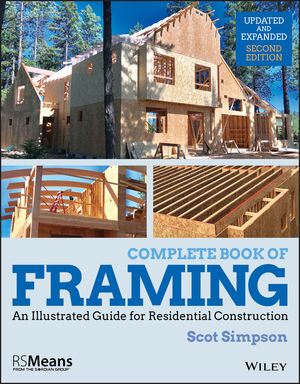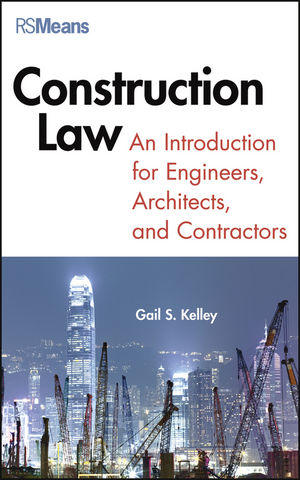Pay Attention to New Rules for Cranes and Derricks
This column is commentary and contains some
opinions rather than complete details of the topic being covered. The topic is OSHA’s amended Part 1926 Subpart CC - Cranes and
Derricks in Construction.

This column is commentary and contains some opinions rather than complete details of the topic being covered. Of course, this column is always commentary, but small details in a legal document can have a significant impact, so it is important for me to point to my own limitations. The topic is OSHA’s amended Part 1926 Subpart CC - Cranes and Derricks in Construction.
The new rules put forward in Subpart CC go into effect Nov. 8, 2010. They are complex and should be read and understood in their entirety. Those of us in the roofing industry have an interest in this new rule. Not some of us: all of us.
I have read through Subpart CC and plan to review key parts of it over the coming weeks and you may wish to do the same. The document is available from OSHA online at www.osha.gov/cranes-derricks. I think safer crane operators and operations are beautiful things, and this is a good time to pay some attention to these new rules.
To begin with, the real meat of the rule involves equipment with rated hoisting/lifting capacity over 2,000 pounds. For the roofing industry this primarily involves operators of most truck-mounted hydraulic cranes and articulating knuckle/boom cranes. There are certain cases, particularly with simple roof material loading, where knuckle/boom cranes equipped with automatic overload prevention devices will be exempted from much of the rule.
Two of the keystones of the new rules for cranes over 2,000 pound capacity are operator training and certification. Effective November 8, 2010, only operators who have been certified by an accredited program will be considered as “operators.” All others will be considered “operators in training.” All operators of cranes included in the rule must become certified within the four-year “phase-in” period that ends Nov. 10, 2014. For operator training, the National Commission for the Certification of Crane Operators (NCCCO) - www.nccco.org - is one source that is highly regarded.
Signal persons and riggers who work with crane operators are also required to be trained and “qualified” (not certified) as called for in the rule. I found no “phase-in” period for training and qualifying signal persons or riggers. There are a number of other rules that will go into effect Nov. 8, 2010, including fall protection, management of the worksite adjacent to crane operations and working distances from power lines.
At the end of Subpart CC there is a section on “Equipment with a rated hoisting/lifting capacity of 2,000 pounds or less” that specifies the requirements for the kind of smaller hoisting equipment that many roofing contractors operate every day. There are specific requirements for assembly/disassembly, equipment inspections, care and use of wire ropes, fall protection and power line safety, to name a few. This new rule from OSHA is certainly not restricted to large construction cranes.
So now we, as an industry, have an opportunity to improve on our safety rating. While I am no big fan of more government regulations, this set of rules should ultimately provide a decent guideline aimed toward better work practices, fewer workplace injuries and deaths and ultimately lower costs.

This column is commentary and contains some opinions rather than complete details of the topic being covered. Of course, this column is always commentary, but small details in a legal document can have a significant impact, so it is important for me to point to my own limitations. The topic is OSHA’s amended Part 1926 Subpart CC - Cranes and Derricks in Construction.
The new rules put forward in Subpart CC go into effect Nov. 8, 2010. They are complex and should be read and understood in their entirety. Those of us in the roofing industry have an interest in this new rule. Not some of us: all of us.
I have read through Subpart CC and plan to review key parts of it over the coming weeks and you may wish to do the same. The document is available from OSHA online at www.osha.gov/cranes-derricks. I think safer crane operators and operations are beautiful things, and this is a good time to pay some attention to these new rules.
To begin with, the real meat of the rule involves equipment with rated hoisting/lifting capacity over 2,000 pounds. For the roofing industry this primarily involves operators of most truck-mounted hydraulic cranes and articulating knuckle/boom cranes. There are certain cases, particularly with simple roof material loading, where knuckle/boom cranes equipped with automatic overload prevention devices will be exempted from much of the rule.
Two of the keystones of the new rules for cranes over 2,000 pound capacity are operator training and certification. Effective November 8, 2010, only operators who have been certified by an accredited program will be considered as “operators.” All others will be considered “operators in training.” All operators of cranes included in the rule must become certified within the four-year “phase-in” period that ends Nov. 10, 2014. For operator training, the National Commission for the Certification of Crane Operators (NCCCO) - www.nccco.org - is one source that is highly regarded.
Signal persons and riggers who work with crane operators are also required to be trained and “qualified” (not certified) as called for in the rule. I found no “phase-in” period for training and qualifying signal persons or riggers. There are a number of other rules that will go into effect Nov. 8, 2010, including fall protection, management of the worksite adjacent to crane operations and working distances from power lines.
At the end of Subpart CC there is a section on “Equipment with a rated hoisting/lifting capacity of 2,000 pounds or less” that specifies the requirements for the kind of smaller hoisting equipment that many roofing contractors operate every day. There are specific requirements for assembly/disassembly, equipment inspections, care and use of wire ropes, fall protection and power line safety, to name a few. This new rule from OSHA is certainly not restricted to large construction cranes.
So now we, as an industry, have an opportunity to improve on our safety rating. While I am no big fan of more government regulations, this set of rules should ultimately provide a decent guideline aimed toward better work practices, fewer workplace injuries and deaths and ultimately lower costs.
Looking for a reprint of this article?
From high-res PDFs to custom plaques, order your copy today!







